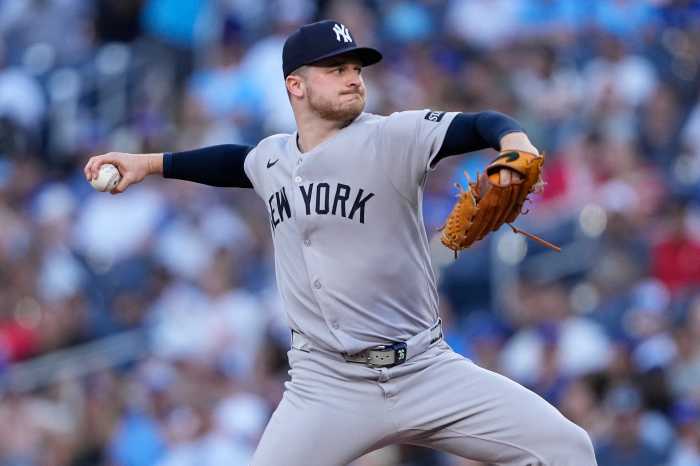After nabbing Markelle Fultz, there is buzz abound regarding the Sixers’ offense. But the Sixers’ may see more improvement on the opposite end of the floor.
The addition of JJ Redick & Markelle Fultz, coupled with the return from injury of Ben Simmons, has Sixers’ fans dreaming about a more dynamic offense surrounding Joel Embiid in Philadelphia. And justly so: Embiid’s offensive versatility is enough on its’ own to excite fans. Mix in Simmons/Embiid P&Rs and skilled shooters spotting up along the perimeter, and it is easy to understand why some have playoff expectations of this franchise for the 2017-2018 season. (In this pathetic Eastern Conference, that is perfectly reasonable.) The offensive potential of the Sixers’ roster, however, might be stealing much of the spotlight from a sleeper catalyst in a possible playoff push: the Sixers’ defense.
In reality, there will be bumps in the road when it comes to Brett Brown & Co. figuring out exactly how to most efficiently run the offense and utilize each player’s’ strongest abilities. Think of it like transitioning into a new home. You have to move the things around a bit, tweak the layout of the furniture, adjust the lighting, maybe paint a room or two. It isn’t quite home yet, maybe not until days or weeks after you’ve moved in.
Brett Brown has a highly featured player on offense in Joel Embiid, whose usage rate for this past season was 36.3%, 3rd amongst players who have played at least 30 games and averaged 20 mpg. With more weapons deployed around Embiid, his usage rate will inevitably drop. (Although as skilled and efficient as JoJo is, you don’t necessary want him to sacrifice possessions.) Let’s say Embiid’s usage rate comes back down to earth a bit next season, a number around those of his peers Karl-Anthony Towns (27.4%) and Nikola Jokic (23.6%): 25%, for arguments sake. That is a major adjustment to an offensive unit, before even considering what Simmons and Fultz’ offensive numbers and tape show: they, too, are players who have demonstrated a desire to have the ball in their hands, and consequently, possessed a high usage rate during college ball. Fultz had a whopping 31.4% USG at Washington and Simmons lone year at LSU was not far behind at 26.4%. Mathematically, those percentages have to come down. Suffice to say, Brown has some work ahead of him in discovering the best route in deploying his offensive sets. And maybe even more time consuming, the players have to adjust their style of play to make the offense operate efficiently.
Considering the growing pains that lie ahead, the Sixers’ may stumble out of the gate to begin next season. And while the Eastern Conference is seriously lacking in star power, at least 5 of the teams that locked down an East playoff seed this past season figure to be as good or better next season: Boston, Cleveland, Toronto, Washington and Milwaukee. So that leaves 3 seeds up for grabs in the East bracket, and likely pursuers in Miami, Detroit, Charlotte and Philly. (I guess you could throw Orlando in there too.) If the Sixers wish to appear in next season’s playoffs, their defense will need to make up some wins for those that will be casualties of offensive experimenting. With defensive anchors Joel Embiid and Robert Covington, there’s reason to believe the Sixers’ defense will perform at a high level from the jump and provide wins early on next season.
Although his sample size was limited, Joel Embiid flashed elite level defensive play last season – I’m talking Defensive Player of the Year potential. Steve Shea, NBA analyst and author of Basketball Analytics: Spatial Tracking, has created IDR (Interior Defensive Rating), a statistic that quantifies players’ individual defensive impact on the floor. The criteria for IDR takes into account “steals, blocks, deflections, loose-balls gathered, defensive rebounds, opponents’ FG% on shots within 6 feet, individual defensive ratings (as calculated by NBA.com), pace, minutes played, opponents’ FGA within 6 feet, and 3-point shots contested.” Shea’s model scores Embiid’s IDR at 10.1 – the very best in the league for Shea’s most recent installment. (You can read more about IDR here.) Embiid’s awareness and timing allow him to give disruptive interior help defense. His athleticism and length provide him the ability to switch onto guards who quiver with fear over the lingering threat of a chase down block. There’s an instance that comes to mind, pointed out months ago by Danny Chau of the Ringer, in which Joel has been switched on to Jeremy Lin during a game against the Brooklyn Nets.
Any other time Jeremy Lin draws any other center out to the perimeter, he’s elated about the impending lack of effort required to shake the big man. But Embiid is so fluid and relentless that he forces Lin to turn the ball over, as Lin is more concerned about a trailing Embiid than he is of what to do next with the ball. That sort of mobility on defense out of a 7 footer is rarely seen. The impressive ease with which Embiid hounds a smaller, quicker guard testifies to his ability to switch on defense. It is, perhaps, Embiid’s switchability that makes him so valuable on the defensive end. It is the same reason that Draymond Green is such a difference maker: he allows Golden State to smother opposing backcourts because he can guard literally every single position and switch on to smaller guards in the P&R, as well as protect the rim. Switching is the number one defensive strategy in stopping the pick-and-roll, but only if you have the correct personnel. Embiid isn’t just the correct personnel, he is the prototype center for switching. Simply put, Embiid makes everyone around him better on defense because of his ability to bail out teammates that have been beaten or screened. It isn’t just Embiid’s one-on-one knack for making stops, it is the SPACE he covers that drastically improves team defense; the fear of his spatial recovery instills doubt in the opposition.
While the Process Incarnate mans the front court, Robert Covington will be patrolling passing lanes like a crossing guard. Covington is a polarizing Sixer because of his inefficiencies and inconsistencies on offense. But if you consider his versatility and commitment to improvement on defense, it is hard to argue that he can’t be an important part of the Sixers’ starting lineup. Being the 5th option on a starting lineup of Fultz/Redick/Covington/Simmons/Embiid, Covington will be freed up offensively and able focus his energy on defense, where he demonstrated his ability to disrupt offenses last season, leading the NBA in passes deflected per game at 4.2. Steals can be overrated in terms of valuing a player’s worth, but Covington doesn’t just generate turnovers on lazy passes. He is a long, athletic, pesky isolation defender on top of clogging lanes off the ball, allowing him to take on the challenge of defending the opposition’s best player or switch onto any position 1 through 4. And he just keeps getting better: his defensive real plus/minus has consistently increased each of the last 3 seasons: 0.02 in ‘14-15, to 2.09 in ‘15-’16, to 4.34 this past season (stats per ESPN.) 4.34 was good enough for 3rd highest in the league, above names like Kawhi Leonard, DeAndre Jordan and Anthony Davis. And NBA minds took notice: RoCo placed 4th in Defensive Player of the Year voting for the 2016-2017 season.
Any question marks about the competency of the Sixers’ defense are found hanging over the heads of Ben Simmons and Markelle Fultz; two players who, at times on defense during college ball, had looked more interested in checking their twitter feeds than guarding the guy in front of them. There is undoubtedly concerns about lazy defense and the effect it can have on team morale on that end of the floor. Conversely, if Brett Brown is able to unlock the potential of Simmons and Fultz’ defense, he may find a himself another pair of elite versatile defenders, built for switching on defense. With both players, it is more a question of whether or not they are willing to put in the time and effort to become above average defenders, than it is of capability. With Simmons being such a long, athletic freak, the tools are present for him to become a defender with the versatility coaches so desperately covet. Similar to Simmons in athleticism, Fultz has his own bag of tools to utilize on defense. And what he lacks in size (6’4”), he more than makes up for in wingspan (6’10”):
All the pieces are there for the Sixers’ to have a smothering, pesky, versatile defense. A front court pairing of Embiid and Simmons would certainly require a lot of Embiid. Simmons would struggle initially with bigger traditional 4’s, and Embiid would have to be aware of not only his assignment, but Ben’s as well. But with a security blanket of Joel Embiid rejections, Simmons can focus more on ripping boards and initiating the break. Out on the wing, Robert Covington’s defense was as good as it gets when it comes to stopping quick cutters and entry passes. And in the backcourt, Redick has proven to be a capable off ball defender. If the Sixers’ coaching staff can tap into Fultz’ defensive potential, he could be one of the more talented on-ball defenders in a league where stopping point guards is getting harder and harder. But be cautioned: it comes down to whether or not Brett Brown’s staff can motivate Simmons and Fultz to maximize their efforts defensively and focus on learning technique.
One final thing I would like to touch on is my predicted starting line up: I went with Fultz/Redick/Covington/Simmons/Embiid. Simmons would be the primary ball-handler but slide to the 4 on defense. It’s no lock and it may not be the most effective lineup, but it is the best fit on paper defensively. (Covington vs Dario for a starting spot is a topic all its own for a later article.) And I love the versatility of that unit. An experiment I’d like to see, mainly against teams going small, is Covington defending ball handlers. Fultz could be so disruptive off the ball defensively. He has shown a knack for sliding from the weak side and timing blocks perfectly. Those plays are really encouraging to see, because it shows that Fultz does at times want to play defense, even if it’s for the highlight reel. Putting Fultz on smaller wings allows him to exert less energy on defense while putting Covington in a position to maximize his effort in a role where he’s strongest.
Ultimately, the Sixers’ are going to have a lot of moving parts. It could take all season to assimilate this roster properly. But with a wide open East, it’s important for the Sixers to snag a playoff seed; it would provide valuable experience to a team constructed mostly of players who aren’t old enough to rent a car. In order to do that, the Sixers must rely on fundamentally sound and relentless defense. The tools are there, Brett: build a brick wall.
Mandatory Credit: John Geliebter-USA TODAY Sports


























